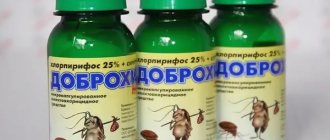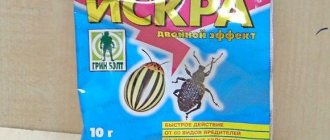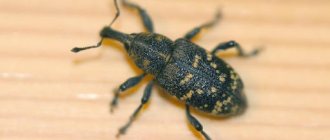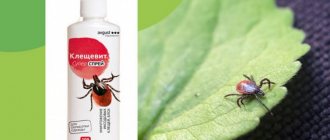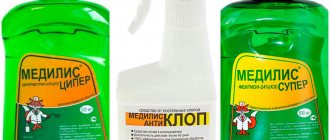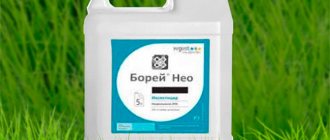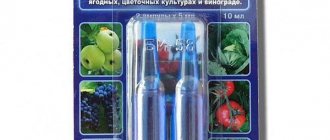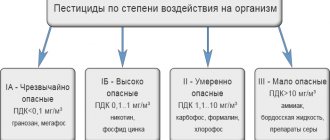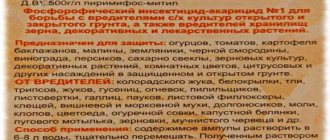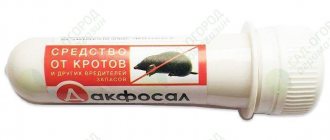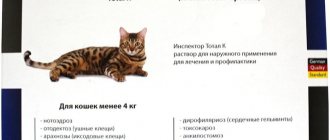There are plenty of harmful insects in nature. Some attack apartments and houses. But most of them damage plantings in the garden and vegetable garden. We will not list all types of insect pests.
Let’s focus on one of the most dangerous – bedbugs. Creatures can live in nature and at home. Quite resistant to poisons that are commercially available. Because of this, chemists have a hard time.
It is necessary to constantly create a lot of new substances. The drug Karbofos solves problems with “uninvited guests” that damage greens and healthy crops.
It differs in the greatest effectiveness from other pest control products. And especially bedbugs. The main task of the gardener remains to fully study the instructions for use, composition and other important points.
Description and characteristics of Karbofos
Karbofos is an insecticide. It is deservedly called the most productive substance that eliminates harmful “inhabitants” of the garden. Has a wide spectrum of action. Promotes the destruction of harmful insects that are found on the soil (open, closed ground).
There are few similar substances. They differ in cost, efficiency, and methods of use.
Organophosphorus substance. It contains several components, but the main one is malathion. If we consider only the main ingredient of a chemical product, then its appearance:
- colorless;
- liquid form;
- increased volatility;
- Strong smell.
The compound is oily. But it dissolves quite quickly. Since Karbofos is a volatile substance, it is worth remembering: the ability doubles if used in dry, hot weather. The higher the temperature, the faster the liquid working solution will evaporate.
With its help, the destruction of all known pests is quick and effective. Provided that Karbofos has thickened during long-term storage, the abilities do not change. It is also productive, toxicity persists.
You can buy insecticide in different forms, from different manufacturers:
| Appearance | Manufacturers |
| Powder | Alatar |
| Liquid emulsion in ampoules | Aktellik |
| Tablet form | Karbofos |
| Liquid | Iskra-M |
Differences in purchased substances: presence of additives, concentration of constituent components. Toxicity for humans is average (grade 3). It has a strong smell, but it quickly disappears and does not leave any pungent traces.
Description of the drug, scope of application
Karbofos, familiar to many, is a liquid in a small bottle, stored in the household of many gardeners. They poison insects, protecting fruit trees, berry gardens, and ornamental plantings. It is indispensable for the disinfection of houses and apartments, warehouses, as well as for the destruction of the ubiquitous cockroaches and bedbugs.
The main active ingredient of the product is malathion ester. This is a component of organic origin from the group of sulfur-containing compounds with a high phosphorus content. By affecting the nervous system of insects, the compound blocks the normal transmission of nerve impulses, which ultimately leads to the death of the parasites.
The poison is destructive for cold-blooded insects, non-toxic for warm-blooded animals. In the body of pests, malathion is converted into malaoxone, providing long-term protection of treated surfaces from various parasites.
Externally it is an oily liquid with an unpleasant pungent odor. It is easy to mix in water and forms an emulsion with a stable structure.
On a note! At sub-zero temperatures, the liquid turns into a viscous mass, while all the properties of the insecticide are retained in full.
According to the degree of danger, it is included in group III class, phytotoxicity is weakly expressed.
Available in various forms:
- concentrated suspension (ampoules, bottles, volumes 5, 10 ml, 0, 25, 5 and 1 liters);
- powder (30 and 60 gram bags, 1 and 5 kg packaging);
- working solution, ready for processing (5 liter plastic canisters).
Of the analogues, the action closest to the poison is:
- Atlant;
- Fufanon;
- Avidust;
- Nittifor.
Composition and principle of action
The composition of Karbofos has a special structure. It is both fatally toxic to cold-blooded creatures and weak against warm-blooded creatures. Classified as an FOS or organophosphorus compound. This makes it a class 3 hazard for people and pets, but a lethal poison for most types of pests.
The formula of FOS Karbofos consists of organic substances: sulfur and phosphorus. The active substance not only eliminates the harmful problem, but acts by influencing the nerve endings of the insect: it completely paralyzes it. Penetrates through the intestines.
Analogues of the drug
Synonyms for “Karbofos ” are malathion, compound 4049, phosphothione-50, malathion LV, drug 4049, phosphothione, etc.
Analogues of "Karbofos" and preparations containing malathion as an active ingredient:
- for agricultural plant protection - Alatar, Aliot, Antiklesch, Inta-Vir, Iskra M, Karbotsin, Profilaktin, Fufanon, etc.
- for medical and household use - Duplet, Medilis, Foscon, Fufanon-super, Tsipromal
"Karbofos" - emulsion concentrate, malathion dosage 50%
Features of use in the garden
Karbofos for the garden is an irreplaceable substance. Its effect covers 90% of harmful insects that can be found on crops and in the soil. The drug is needed not only in gardening; its use in medical institutions, agriculture, and forestry has become an active assistant.
At its core, Karbofos is a disinfectant. In addition to disinfection, the positive aspects include:
- crop preservation;
- increase in fruits;
- elimination of not only adult individuals, but also their larvae.
In this case, the soil is not damaged. Requires compliance with standards and dosages. Follow strictly the recommendations specified in the instructions. Preparation for each culture is prescribed and has its own nuances and characteristics.
Karbofos is recommended to combat:
- codling moths and gallicia;
- all types of bedbugs and sawflies;
- aphids and honeysuckers;
- weevils and whiteflies, mites.
Important! The product poses a threat to the above insects. But besides them, Karbofos also kills useful “visitors” of the dacha and vegetable garden. Its detrimental effect affects pollination, as pollinating insects are eliminated. Hence the rule of use: it is prohibited to carry out any activities with the working substance during the flowering period.
Purpose and areas of use
Karbfos has a fairly wide range of applications. Here are just a few insect pests against which it is recommended to use this product:
- aphid;
- black garden ants;
- kidney mites;
- red ants that appear in houses;
- cockroaches;
- bedbugs;
- and others.
Photos of Karbofos release forms
Where can Karbofos be used:
- compact garden plots and even entire farms;
- treatment of residential buildings for disinfection purposes;
- sanitary and medical disinfection against lice, malaria carriers, etc.;
- warehouse processing of the drug;
- destruction of exo- and endoparasites in the field of veterinary medicine.
It is necessary to keep in mind that it is necessary to carry out 2 to 3 treatments with Karbofos throughout the year. It is no longer recommended, since an enzyme is formed in the body of insects that destroys the structure of the main substance of the drug.
Rules for preparing the solution
The Karbofos insecticide should be used strictly according to the recommendations and instructions compiled by specialists. The working solution will need to be diluted according to the problem, since the liquid affects different insects differently. There is no standard dosage for mixing.
The working solution is prepared according to a strict procedure: Karbofos is mixed with a small amount of water. The required volume of liquid is gradually added. In this case, stirring should be without interruption. The working mixture is used only after obtaining a homogeneous suspension.
The dosage is calculated using different formulas:
| Plant | Treatment | Dosage | Pests |
| Quince, apple and pear | Sapling, young tree – up to 2 liters, fruiting tree – 7-10 liters | Bucket (6-7 l)+60 g Karbofos | Leaf roller and scale insect, weevils and cherry flies |
| Sweet cherry, plum, cherry tree | 1.5-2 l per planting | 8 l + 55-60 g of substance | 1.5-2 l per unit Sawfly, scale insects, gall midges, leaf rollers, bud moth |
| Apricots, peaches | Adult plant – 10 l, young plant – 2 l | 10l package of substance | Leaf roller, codling moth |
| Shrubs (gooseberries, currants, raspberries) | 1-1.5 liters per bush. Raspberries - per hundred | 1 package+8 l | Weevils, gall midges, bud moths, scale insects |
| Grape | Use 1-1.5 liters per hundred square meters | For 8 l add a package of product | Spider mites, phylloxera, mealybug |
| Peppers, tomatoes, cucumbers | It is used by spraying. 10 sq. m.=1 l of working mixture | 10 l+60 g product | Aphids and whiteflies, spider mites and germ flies |
Protection against garden pests
Ants are one of the most annoying and difficult to remove insects in the garden. As a preventative measure to protect the garden from ants, take 30 grams of Karbofos per amount of water from 3 to 5 liters.
Treatment method:
spraying onto the anthills themselves.
Be sure to treat tree trunks in the same way. Pests in the garden!
Cutworm Wireworm Mole
cricket Additionally, to enhance the effect, sprinkle the powder in those places where there is a particularly large concentration of ants, as well as on the paths along which they most often move. Process no more than 2 times.
To treat fruit, berry and vegetable crops with Karbofos, it is recommended to use irrigation or the same spraying as described in the fight against garden ants. Process twice. Between treatments it is necessary to leave a gap of at least three to four weeks. The first treatment is recommended in early March, when the buds have not even formed, and the second – after the crop has finished flowering.
How to process
Treatment options, options and the need for application are an important point for preserving the crop and eliminating harmful “visitors”. To obtain complete information about this, study the instructions for use.
The standard procedure for treatment is spraying. The working fluid is applied using a respirator. The work can be considered complete after completely wetting the green part of the plant (stem, foliage). The rules for working depend on the type of crop.
Berry bushes
Shrubs are fully protected when spring gardening is carried out. It must be done before flowering. The second protection measure should be carried out after full flowering and fruit harvest.
If treatment with Karbofos against currant bugs is carried out, then spraying is allowed up to 3 times, instead of the standard two:
- appearance and development of kidneys;
- period of inflorescence formation;
- several days before the start of harvesting work.
Strawberries and garden strawberries are subject to attacks by bugs. As well as mites and strawberry weevils. To prevent this phenomenon, spraying is carried out in the spring (after the snow melts) during the budding period. Then they are treated with Karbofos in September (first week).
Raspberries and blackberries are also sprayed twice: in the spring after the snow melts and the buds appear, after harvesting the fruits.
Fruit trees
It is always recommended to treat fruit and berry trees with Karbofos. The working solution is applied in the spring to the surface of the plantings. Spraying of trees takes into account the age of the crop. In general, one tree takes up to 8-10 liters. for young animals – 2-5 liters.
If you have citrus trees in your country house or greenhouse, one unit will require 3-5 liters. To spray a sea buckthorn tree, the working fluid is made more concentrated: 3 liters of water + 50-60 g of Karbofos. Spraying calculation by quadrature: 10 sq. m = 2 l of working suspension.
Flowers
Karbofos against bedbugs is used in gardening no less often than for vegetable crops. The substance provides protective properties against pests:
- spider mite and sawfly;
- aphids and bedbugs.
With Karbofos, garden crops and flowers feel great. But exact dosages will be required: take 50-60 g of Karbofos and dilute it in a small amount of water. Dilute to obtain 8 liters of working suspension.
Spraying is carried out in the standard way: until the green part of the flower is completely wetted. Application of the product is provided no more than 2 times a season: in the spring before flowering and after. Watering should be calculated based on quadrature: 2 liters of working mixture per 10 square meters. The following can be processed:
- rose bushes;
- barberry;
- jasmine.
As practice shows, after applying the solution to other garden plants, Karbofos does not cause harm. But it’s worth doing a compatibility test first.
What is Karbofos
Liquid Karbofos is available on sale, in granules, powders and even tablets. The approximate cost of the drug in volumes of 30, 60, 1000 g is 30–200 rubles. The product from the group of insecticides has an oily consistency, characterized by transparency, a specific odor, which evaporates after a while.
When Karbofos is diluted in water, a homogeneous suspension is obtained, suitable for spraying garden crops. In conditions with negative temperatures, the working solution thickens, but retains its qualities. Keep in mind that it is a highly toxic insecticide, and differs from its analogues in the short duration of action of the main substance: after 2 weeks, malathion disintegrates and becomes ineffective.
Types of karbofos packaging
Compound
The product is ideal for the prevention and treatment of garden plants. Its active ingredient is the organophosphorus compound malathion. Additives can be introduced: “Antiklesch”, “Inta-CM”, “Iskra-M”, “Alatar”, “Aktellik”, “Phenaxin-plus”, “Fufanon-nova”. In addition, often for the safety of people and animals, the concentrate for use in gardening can be supplemented with fragrances with a noticeable odor.
Operating principle
Karbofos is effective against crop damage by bedbugs, leaf-eating, sucking pests, and larvae. All types of crops can be processed. Dilute the chemical in early spring, when parasites begin to wake up, before flowering or after harvesting. The poison effectively destroys:
- Anophles mosquitoes, which transmit malaria;
- scale insects;
- leaf roller;
- aphids;
- red, spider mites;
- bedbugs;
- thrips;
- gall midge;
- whiteflies;
- copperheads;
- bud moth;
- sawflies;
- weevils;
- stalk;
- mealyworms;
- leafhopper;
- bean moth;
- pea grain;
- flies
Using karbofos
Pests are destroyed almost instantly. Features of the concentrate:
- Karbofos is an insecticide, acaricide of contact action. The effect is noticeable in cases of direct contact with the pest.
- The product protects those parts of plants with which it comes into contact. The main advantage of this action is the instant elimination of pests.
- It has a short-term effect. The main substance quickly disintegrates under the influence of sun, water, air. Complete destruction on the street occurs after 10 days, in a greenhouse - after a week.
- Characterized by continuous action. At the same time it destroys different types of pests and larvae. The downside of this effect is that with constant use, resistance (addiction) forms and the solution becomes less effective.
Concomitant use with other drugs
In the garden and vegetable garden you have to use various substances. The use of fungicides and growth stimulants is a necessary measure to obtain high yields. Therefore, it is worth studying how well the products are compatible.
You can find out such information from the instructions for use or conduct a short compatibility test. If Karbofos cannot be combined for some reason with fertilizers or fertilizing, you can consider and use analogues of the product.
Of the drugs that really go well with Karbofos, it is recommended to use Aliot, Alatar or Fufanon. And Novaktion ensures an increase in the effect of the protective substance.
The Permethrin + Karbofos procedures show good results. This combination maintains plant resistance to pests while providing 100% protection.
But there is a categorical taboo on the use of Karbofos with Fazaln. The substances are similar to each other and can destroy green spaces and damage the fruiting process.
If you need to replace Karbofos, use the list of similar drugs:
- Diazinon;
- Imidacloprid;
- Permethrin.
Advantages and disadvantages
Advantages of using Karbofos
- instant effect on insects, larvae and adults;
- quickly removed from plants and soil;
- has a minimal cost (a 30g package costs about 25 rubles, which is almost 5 liters of working solution);
- compatibility with other insecticides, fungicides and growth stimulants, there are no restrictions when used together with mineral fertilizers;
- Suitable for most insect pests.
Disadvantages of the drug
- long-term use of the drug is addictive;
- has a short-term effect and is quickly destroyed when exposed to water and sun.
Precautionary measures
The main question that Karbofos users ask: is it harmful to humans, is intoxication possible for pets? Since the substance belongs to hazard class 3, precautions should be observed in any case.
Low toxicity for warm-blooded animals does not mean that the drug is completely harmless. When diluting or working with the solution, you should wear a protective suit and provide protection for mucous membranes. It is prohibited to consume food or drink during dilution or treatment with Karbofos.
After all procedures, hands are washed under running water and laundry soap. If the solution gets on open areas of the body, then you cannot wash it off with hot water. Is it dangerous. Also, the solution and treatment are carried out with cold liquid.
Important! Applying the solution to plants is prohibited in the presence of reservoirs and containers with drinking water at a distance of 1-2 km.
Spectrum and principle of operation
"Karbofos" is used for use in agriculture against many types of harmful insects, stock pests and mites. And also for household use, for medical treatment of animals.
The active substance of the product, malathion, is highly toxic to insect pests. In their body, it turns into another, more toxic substance - malaoxon, which causes their death.
With frequent use of Karbofos, generations of pests can develop resistance to it and other FOS. Insects become capable of breaking down malathion into compounds that are harmless to them. The product is low-toxic for plants and does not change the taste and smell of fruits. "Karbofos" is used against gnawing and sucking insects, and is also effective against herbivorous mites.
Expert opinion
Zarechny Maxim Valerievich
Agronomist with 12 years of experience. Our best country expert.
Ask a Question
When using the insecticide in open beds, the drug has a short period of action (5-7 days) and is destroyed by water and wind. In greenhouse conditions, the protection period increases to 10 days.
Expiration date and storage rules
The structure of Karbofos is liquid. They buy the suspension already in bottles that close well. In this case, storage of the insecticide provides additional points:
- Keep the drug away from heating devices and heat.
- Store in a separate room designated for storing garden tools. Do not keep food, dosage forms or crops near the substance.
- Keep children and animals away from the insecticide.
Conclusions and recommendations
Karbofos is definitely a good drug and many people recommend its use. Why?
The most basic:
- affordable price;
- low toxicity for humans, domestic animals and treated plants, subject to compliance with all operating rules;
- is in the ranking of the first 10 best insecticides.
The use of Karbofos in the garden and in the home or apartment against many pests gives good results.
Temperature
Bouvardia does not have any special requirements for heat. She feels comfortable at average room temperature. During the growing season, which begins in spring and continues until autumn, the plant needs +200 - +250. Sudden changes, which may occur in the spring, when the current year’s stems grow, should not be allowed. Flower buds form on them. In order for the process of bud formation to complete normally, during spring return frosts, when the house gets cold, you need to turn on the heater to maintain +200.
If the summer is too hot, above +280, it is necessary to reduce the temperature using an air conditioner.
Summer-flowering species and varieties are transferred in the fall to a cool room with +100 - +120. This is due to the characteristics of Bouvardia, which in its homeland is classified as an evergreen perennial. In our geographical conditions, during the cold season it enters a dormant state. All vital processes slow down, therefore the temperature decreases.
The best place for hibernation is a winter garden or an insulated balcony.
Those species that bloom in the cold season behave differently. They do not have a pronounced rest period. For winter flowering, in addition to additional lighting, they need a “summer” temperature, not lower than +220. It must be maintained before flowering begins and throughout it.
Security measures
When storing the drug, when preparing a solution for spraying damaged trees and plants, and during insecticidal treatment, certain rules for safe handling of the drug should be followed:
- You cannot eat or drink liquids.
- After completing the work, you need to change clothes, which, together with the personal protective equipment used, should be subjected to special treatment in the form of washing.
- Upon completion of work, you must wash your face, remembering to clear the contents of the internal nasal cavity, and wash your hands thoroughly. All procedures should be carried out using soap.
- It is prohibited to treat with the drug near bodies of water.
- Vegetation should not be sprayed during periods of flowering. This is due to the fact that flowers attract bees, for which karbofos is a poison.
- The drug is subject to decomposition when heated, therefore, when performing all procedures, including preparing the solution and storing the original product, increasing the temperature should be avoided.
- The drug should be stored in a dry room away from fire. Storing karbofos with food or medicine can lead to poisoning.
- Animals and children should not have access to karbofos.
- Do not use when mixed with other analogue drugs.
Karbofos for spraying trees in spring: instructions
Fruit trees are also sprayed with Karbofos, no more than 2 times per season. Apply treatment in early spring.
Karbofos for spraying trees in spring, instructions:
- This will allow you to remove insects that are hiding under the bark, in the soil, and are preparing to appear and actively increase their mass. However, it is worth remembering that some insects are in the form of pupae and larvae.
- The drug acts only on mature individuals, and is absolutely useless on larvae. Always after the first treatment, the next one is carried out to eliminate the new generation.
- Usually a large number of insects appear during bud break on trees. They attack young trees and bushes. This is the ideal period for processing.
Garden work
Instructions for use
To destroy ticks and bedbugs, Karbofos is used as carefully as possible, since it can cause poisoning.
Treatment of the premises with karbofos is carried out with a pre-prepared composition. It is prepared depending on the initial type of raw material. The solution is adjusted to the required concentration, the powder is mixed with water to obtain a solution. About 2-3 ml of Karbofos aqueous emulsion or 5 g of powder are usually dissolved in a liter of water. The solution is applied using a brush or spray, which is more convenient because it allows the solution to penetrate even the most difficult to reach places.
To kill lice, Karbofos is used in the form of shampoo, which should be used by all family members. Apply a generous amount of shampoo to damp hair, leave to act for five minutes, then rinse with water. After drying, the hair is combed with a fine comb to remove dead insects.
Reviews
Antonina, 56 years old, Kazan The house was tormented by bedbugs. No matter what I tried, I couldn’t get them out. Every morning after waking up, I discovered small red spots on my body that itched terribly and caused a lot of cosmetic discomfort. I was advised to use karbofos. Despite its poisonous properties for others, I made up my mind. I prepared the solution, put on glasses, a headscarf, a respirator, rubber gloves and a tracksuit. I sprayed the whole apartment with the solution. She closed the windows and went to her friend's for the night. The next morning I came, ventilated it, by the way, the smell quickly disappeared, I washed everything and began to wait for the result. A year has already passed. I forgot about bedbugs, it seems, forever.
Irina, 45 years old, Moscow region
I recently planted young apple trees at my dacha. I admired them, my eyes were happy. But aphids attacked my apple trees. The leaves began to curl, and black merciless insects began to multiply at tremendous speed. Having rummaged through the depths of the Internet, I learned about a unique drug - karbofos, which was able to solve my problems in 4 hours. Having prepared the solution according to the instructions, I treated the affected apple trees, spraying not only the diseased leaves, but also the healthy ones. The aphid died right before our eyes. I saved my trees.
Anton, 67 years old, Belgorod region
I treated sea buckthorn against gall mites with karbofos. The immediate result was obvious. I prepared a solution based on a 60 gram package, which was diluted in 3 liters of water. Before planting, I dipped the cuttings into the solution. My sea buckthorn, although still small, has already bloomed, delighting its owner.
